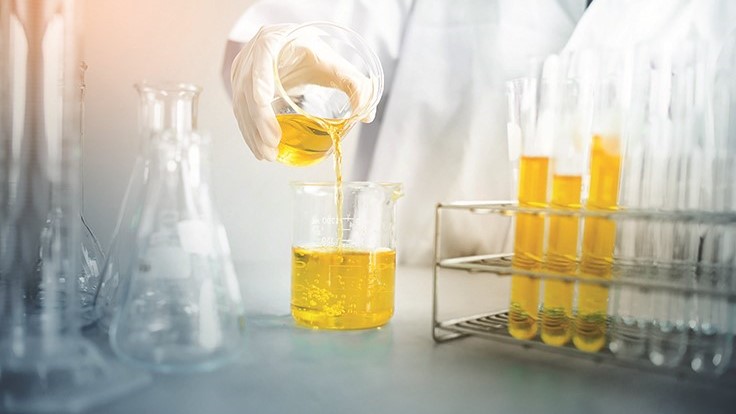Ethanol extraction has emerged as a popular method for extracting cannabinoids and other beneficial compounds from plant materials, particularly in the cannabis and hemp industries. This technique involves using ethanol, a food-grade solvent, to efficiently extract desired compounds while maintaining a relatively safe process compared to other methods. In this article, we will explore the principles of better ethanol extraction, the benefits it offers, and ways to optimize the process for better results.
Understanding Ethanol Extraction
Ethanol extraction relies on the solvent properties of ethanol to dissolve cannabinoids, terpenes, flavonoids, and other phytochemicals from the plant matrix. The process begins with the preparation of the plant material, which may include drying and grinding the biomass to increase surface area. The plant material is then soaked in ethanol, allowing the solvent to permeate the cells and dissolve the compounds of interest.
The extraction process can vary in duration and temperature. Cold extraction is often favored, as it helps to minimize the extraction of unwanted compounds, such as chlorophyll, which can impart undesirable flavors and colors to the final product. In contrast, warm extraction can yield higher concentrations of certain cannabinoids but may also extract more impurities.

Benefits of Ethanol Extraction
- Efficiency: Ethanol is an effective solvent for a wide range of compounds, making it a versatile choice for extraction. Its ability to dissolve both polar and non-polar compounds allows for a broader spectrum of phytochemicals to be extracted.
- Safety: As a food-grade solvent, ethanol is considered safer than many other solvents used in extraction processes. This makes it a preferred choice for products intended for human consumption, such as oils, tinctures, and edibles.
- Cost-Effectiveness: Ethanol extraction can be more cost-effective than other methods, particularly when large quantities of material are involved. The relatively low cost of ethanol and the efficiency of the extraction process contribute to reduced operational costs.
- Scalability: The process can be easily scaled up or down depending on the size of the operation. Whether for small batch production or large industrial applications, ethanol extraction systems can be designed to meet varying needs.
Optimizing the Ethanol Extraction Process
While ethanol extraction is effective, there are several techniques and considerations that can enhance the quality and yield of the extracted products. Here are some strategies for achieving better ethanol extraction:
1. Temperature Control
Managing the temperature during extraction is crucial. Lower temperatures (around -20°C to 0°C) can help reduce the extraction of unwanted compounds, such as chlorophyll, which can negatively impact flavor and color. Conversely, slightly elevated temperatures can enhance the solubility of specific cannabinoids. Striking the right balance is key to optimizing the extraction process.
2. Soaking Time
The duration of the soak can significantly affect the efficiency of the extraction. A longer soak time can lead to higher yields but may also increase the extraction of undesirable compounds. Experimenting with different soak times can help identify the optimal duration for a specific plant material and desired outcome.
3. Particle Size
The particle size of the plant material can influence extraction efficiency. Smaller particles have a larger surface area, allowing for better solvent penetration and higher extraction rates. However, overly fine particles can lead to increased extraction of unwanted compounds. A moderate grind size is typically recommended to balance extraction efficiency and purity.
4. Filtration and Purification
After the initial extraction, the solution often contains a mixture of desired and undesired compounds. Effective filtration methods, such as vacuum filtration or using filter papers, can help separate the extract from plant debris. Additionally, further purification steps, such as winterization (removing fats and waxes) and activated carbon filtration, can improve the quality of the final product.
5. Ethanol Recovery
To minimize waste and reduce costs, implementing a system for recovering and recycling ethanol is beneficial. Distillation units can be used to reclaim ethanol from the spent material, allowing for its reuse in subsequent extractions. This not only reduces operational costs but also supports sustainable practices within the extraction process.
Considerations for Compliance and Safety
When conducting ethanol extraction, it is essential to comply with local regulations and safety standards. Ethanol is flammable, and appropriate safety measures must be in place, including proper ventilation, the use of explosion-proof equipment, and training for personnel involved in the extraction process.
Additionally, quality control measures should be implemented to ensure the safety and efficacy of the extracted products. Regular testing for residual solvents, microbial contamination, and cannabinoid potency can help maintain product integrity and meet regulatory requirements.
Future Directions
As the demand for cannabis and hemp-derived products continues to grow, advancements in ethanol extraction technology are likely to emerge. Innovations in equipment design, process automation, and extraction methodologies will enhance efficiency and product quality. Researchers are also exploring the potential for combining ethanol extraction with other extraction methods, such as supercritical CO2 extraction, to leverage the strengths of each technique.
Ethanol extraction is a powerful tool for harnessing the beneficial compounds found in plants, particularly in the cannabis and hemp industries. By understanding the principles of the extraction process and implementing strategies for optimization, producers can achieve better results, maximizing both yield and quality. As the industry evolves, ongoing research and development will continue to refine ethanol extraction techniques, ensuring that they meet the growing demand for safe, effective, and high-quality products.